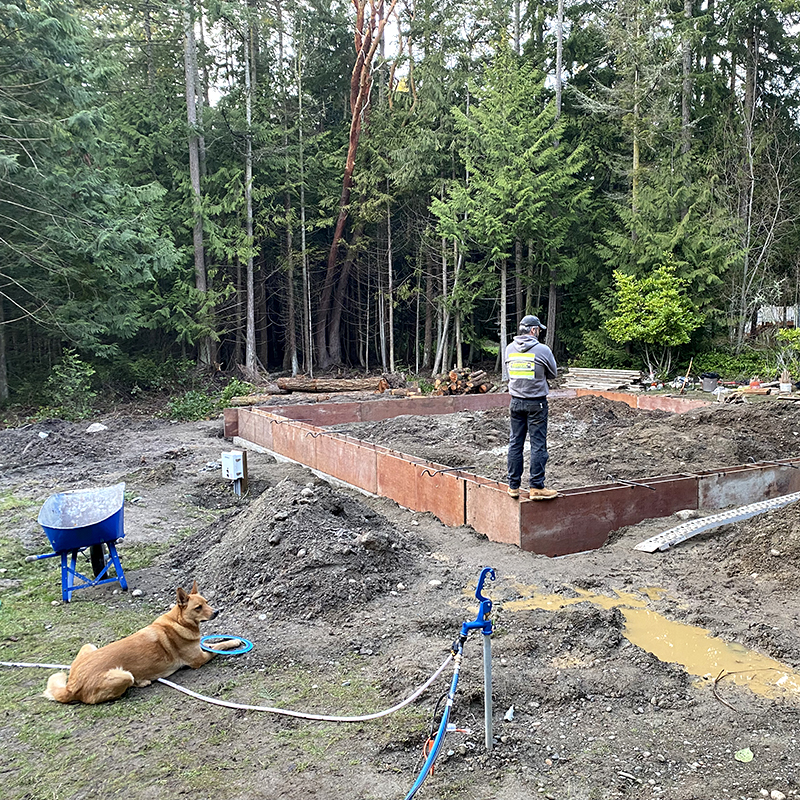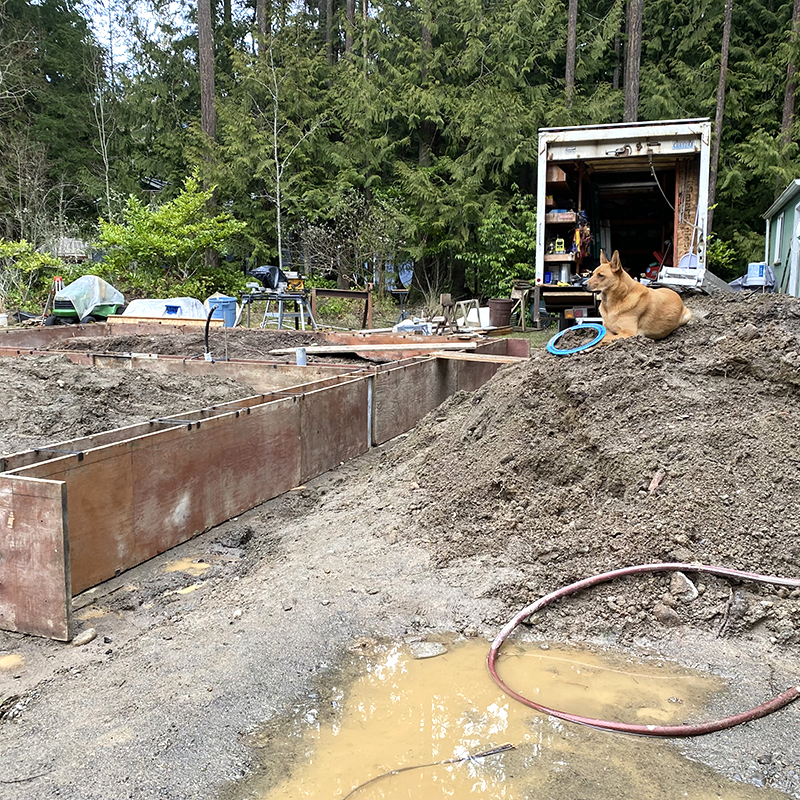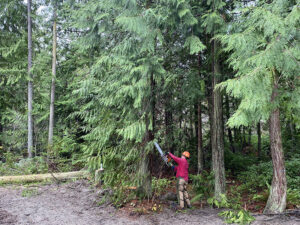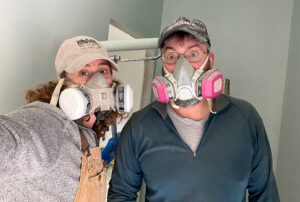
Our future house is now two feet higher than it was last week – all thanks to the stem wall we poured yesterday. Progress was slow due to high demand for Jefferson County building inspections and scheduling conflicts with the concrete company. Unfortunately, there’s nothing we can do about that… but wait… and have patience. Hang on, I thought I’d been practicing patience the last four years!?!
Luckily the weather has been gorgeous, which allowed our moat to dry out and gave us an excuse to enjoy the rare winter sun. See photo above of sunset over Discovery Bay and the Olympic Mountains from the Cape George beach.
After the footings dried (see Shaky Start, Solid Now post), Tache and crew (with Moxie’s help of course) set the stem wall forms – these will be the base of our future house walls. Interestingly, the plywood boards used to create the forms are coated in diesel, which concrete can’t stick to. That means we’ve had the distinct aroma of diesel wafting about our building site the past week. I thought I wouldn’t have to deal with that stench ever again after moving off the boat… practicing patience, practicing patience…


Moxie helping, obviously.
We received the green light for the stem walls from the inspector and pumped the concrete into the forms yesterday. It was fascinating to watch the concrete flow like water through the forms and around the rebar, then ooze out the tiny cracks where the boards and footings meet. It’s crazy to see something you ordinarily think of as rock solid as a liquid element. I had never thought of concrete as a scientific phenomenon, but seeing it like this got me wondering. And, me being me, I had to look into it a bit more.
I can’t say I fully understand how concrete works, but I can say with full certainty that it is quite impressive. Its origins likely date back to early Roman times, when it was made of lime and volcanic ash (thanks Vesuvius!). Concrete is now made of aggregates (crushed stone), water, and the magical ingredient known as cement. FYI: Cement and concrete are not the same thing (maybe you already knew, but I did not). Cement is only 10-15% of the concrete mix and is made of gypsum, clay or shale, and limestone. When mixed with water, a chemical reaction called hydration causes it to bond with the aggregates. If you keep concrete moving, it remains fluid. As soon as it stops moving, the bonds begin to strengthen and the concrete cures. There are all sorts of variables at play during the curing process, but most interesting is that concrete gets stronger with age because the hydration process continues for many years.
So, all that to say, we now have stem walls and I (kind of) understand the science behind how they will be strong enough to support the rest of our future house.










